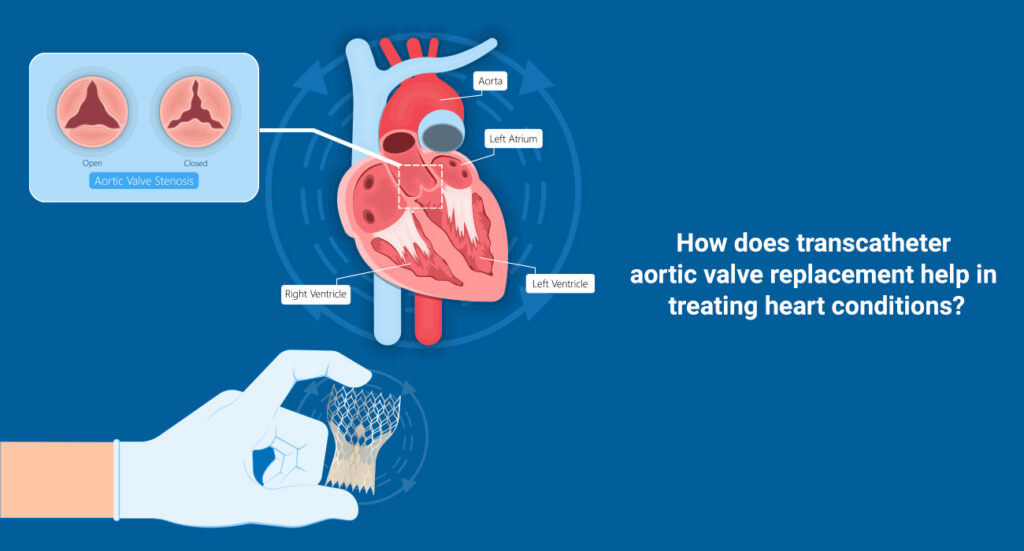
In modern medicine, where innovation is the heartbeat of progress, there is one procedure that has sent shockwaves through the corridors of cardiac care. It goes by the acronym TAVR, but its effects are far from small. Transcatheter aortic valve replacement, or TAVR, represents a triumph of science and technology that reaches the very core of our being, our heart. In this journey, we’ll explore the definition of TAVR, unlocking the secrets contained within its seven letters.
We will highlight its immense significance not only in the field of cardiology but also for every heartbeat that wants to be compatible with life. Prepare yourself for a mesmerizing exploration that touches not just the heart, but the very essence of existence.
What is Transcatheter Aortic Valve Replacement (TAVR)?
Transcatheter aortic valve replacement (TAVR) is a surgical alternative to open cardiac surgery for replacing a constricted or damaged aortic valve in the heart.
Instead of making a large incision, doctors insert a new valve through a catheter (a thin tube), usually through the leg or chest, leading to the heart. This new valve expands, pushes aside the old, damaged valve, and immediately begins working to help blood flow more efficiently, reducing symptoms such as chest pain and shortness of breath. TAVR is often performed in cases where traditional surgery is too risky or not possible, and it can help improve the patient’s quality of life.
Why is TAVR performed?
Today we’re going to talk about why doctors may recommend a procedure called Transcatheter Aortic Valve Replacement, or TAVR for short. TAVR is done to help people with aortic valve problems. So, let’s dive into it:
1. Aortic Valve Stenosis: First, one of the main causes of TAVR is a condition called Aortic Valve Stenosis. This happens when your aortic valve, which controls blood flow from your heart to the rest of your body, narrows. Imagine a door that doesn’t open all the way; That’s what happens to your valve. And when it constricts, it makes it harder for blood to flow properly, which isn’t great for your heart.
2. Impaired blood flow: This narrowing of the valve means your heart has to work harder to pump blood through it. This can eventually result in issues including exhaustion, shortness of breath, and chest discomfort. Therefore, TAVR helps to solve this problem and improve the performance of your heart.
Now, let’s talk about the good stuff:
Benefits of TAVR
For easy reference, the advantages of TAVR are listed below in bullet points.
Minimally invasive: Unlike traditional open-heart surgery, TAVR does not require a large chest incision or the use of a heart-lung machine. As a result, there are fewer problems, less discomfort, and quicker recovery times.
High-risk patients: TAVR is often a life-saving option for individuals who are considered high-risk or inoperable for traditional surgery due to age or underlying health conditions.
Improved quality of life: Many patients experience a significant improvement in their quality of life, increased energy, and reduced symptoms of aortic valve stenosis after TAVR.
Breakthrough Technology: TAVR represents a remarkable combination of medical expertise and technological innovation, demonstrating the relentless pursuit of safer and more effective cardiac treatment.
Who needs TAVR?
Aortic valve stenosis: TAVR is usually recommended for people with aortic valve stenosis, a condition in which the aortic valve narrows, restricting blood flow from the heart.
B. High-Risk or Inoperable Patients: TAVR may be an appropriate option for patients who are considered high-risk for traditional open-heart surgery or deemed inoperable for various health reasons. It offers a less invasive option for these individuals.
Condition it addresses:
Aortic valve stenosis: TAVR is primarily designed to address and treat aortic valve stenosis, restoring proper valve function.
Contraindications: Although TAVR is beneficial for many, there are certain contraindications or situations in which it is not recommended. Specific contraindications may vary depending on a person’s health and medical history. Your healthcare provider will evaluate these factors to determine if TAVR is the right option for you.
These indications highlight that is a valuable procedure for patients with aortic valve stenosis and who may not be suitable candidates for traditional valve replacement surgery. Always consult with your healthcare team to determine the most appropriate treatment for your specific condition.
During the TAVR procedure:
Anesthesia: You will be given medication so that you do not feel pain during the procedure. You may be sleeping or feeling very relaxed.
Valve replacement: The new valve is placed inside your old one. This pushes the old valve out of the way and starts working right away.
After the procedure:
Recovery: You will spend some time in a special recovery area waking up from anesthesia. Nurses will monitor your condition.
Rehabilitation: You may need physical therapy to regain strength and mobility.
Recommended: You should have regular checkups with your doctor to make sure your new valve is working as it should.
Risks and complications of TAVR
Bleeding: There is a chance of bleeding, particularly where the catheter is put (the access site). This could occasionally call for medical help.
Infection: Though extremely unlikely, there is a chance of infection at the site of the operation or inside the heart.
Stroke: During the procedure, debris or clots can dislodge and block blood flow to the brain, causing a stroke.
Valve leaks: New valves are likely to leak, which may require additional procedures or interventions to correct.
Arrhythmias: Irregular heart rhythms, such as atrial fibrillation, can occur as a complication of TAVR.